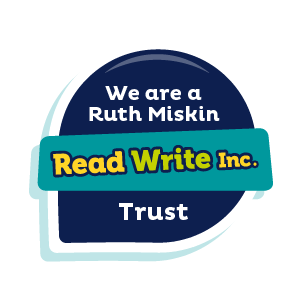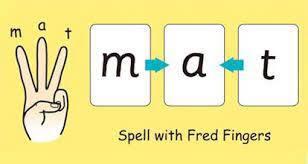- Home
- Curriculum
- Core Subjects
Core Subjects
English Intent
Communication is the key to our English curriculum: to provide exciting and challenging opportunities to develop written, oral and reading skills to enable children to express themselves as individuals.
English
"English has a pre-eminent place in education and in society. A high-quality education in English will teach pupils to speak and write fluently so that they can communicate their ideas and emotions to others and through their reading and listening, others can communicate with them. Through reading in particular, pupils have a chance to develop culturally, emotionally, intellectually, socially and spiritually. Literature, especially, plays a key role in such development. Reading also enables pupils both to acquire knowledge and to build on what they already know. All the skills of language are essential to participating fully as a member of society; pupils, therefore, who do not learn to speak, read and write fluently and confidently are effectively disenfranchised."
The programmes of study for writing at key stage 1 are constructed similarly to those for reading:
- transcription (spelling and handwriting)
- composition (articulating ideas and structuring them in speech and writing).
It is essential that teaching develops pupils’ competence in these two dimensions. In addition, pupils should be taught how to plan, revise and evaluate their writing. These aspects of writing have been incorporated into the programmes of study for composition.
Writing down ideas fluently depends on effective transcription: that is, on spelling quickly and accurately through knowing the relationship between sounds and letters (phonics) and understanding the morphology (word structure) and orthography (spelling structure) of words. Effective composition involves forming, articulating and communicating ideas, and then organising them coherently for a reader. This requires clarity, awareness of the audience, purpose and context, and an increasingly wide knowledge of vocabulary and grammar. Writing also depends on fluent, legible and, eventually, speedy handwriting.
The National Curriculum in England Key Stages 1 and 2 Framework Document, Sept. 2013
Handwriting
In Reception children are taught to form their letters using the 'Read, Write, Inc' scheme alongside the Nelson handwriting scheme so that children are taught how to correctly form letters.
Children in years 1 and 2 have regular handwriting lessons where the Nelson Handwriting scheme is taught. Children are introduced to explicit language to describe the letter formation.
In Year 2
Parent Guidance on reading, writing and spelling with your child
SPaG
Opportunities for teachers to enhance pupils’ vocabulary arise naturally from their reading and writing. As vocabulary increases, teachers should show pupils how to understand the relationships between words, how to understand nuances in meaning, and how to develop their understanding of, and ability to use, figurative language. They should also teach pupils how to work out and clarify the meanings of unknown words and words with more than one meaning. References to developing pupils’ vocabulary are also included within the appendices.
Pupils should be taught to control their speaking and writing consciously and to use Standard English. They should be taught to use the elements of spelling, grammar, punctuation and ‘language about language’ listed. This is not intended to constrain or restrict teachers’ creativity, but simply to provide the structure on which they can construct exciting lessons.
At Shears Green Infant School teachers adopt a range of strategies to teach Spelling, Punctuatuion and Grammar. As well as being able to spell words correctly, use a wide range of vocabulary and punctuate well, children need to grasp the meaning of grammatical terms such as noun, verb, adjective, prefix, pronoun and adverb. They need to know what phrases and clauses are and how to use them, understand what conjunctions are and how they work, know how to turn a question into a command, and so on. This terminology can be a stumbling block even for children who are otherwise good at reading and writing, and make questions hard to understand.
The optional SPAG test taken at the end of Key Stage 1 will include questions that assess the following elements of the English curriculum:
- Sentence grammar through both identifying and writing sentences that are grammatically correct.
- Punctuation through identifying and writing sentences that are correctly punctuated.
- Vocabulary through identifying and writing sentences in which a word is used correctly.
- Spelling through identifying and writing correctly spelt words.
At Shears Green Infant School we use the Ed Shed spelling programme which is a whole school tool providing lessons that cover the National Curriculum including common spelling rules and statutory word lists. This programme consolidates learning and uses the same decoding rules as children learn with Read, Write, Inc.
Parent Guidance on reading, writing and spelling with your child
Phonics
Read, Write Inc.

At Shears Green Infant School, we aim for all our children to become fluent, confident readers who have a passion for reading and love to read and listen to a range of texts.
As Dr.Seuss says: “The more that you read, the more things you will know. The more that you learn, the more places you’ll go.”
We strongly believe that children who read regularly or are read to regularly will have the opportunity to open many different doors and will be able to travel to many different places. Reading will give our children the tools to become independent life-long learners.
We achieve this together through:
- Read, Write Inc - a programme that helps your child to read, we deliver this through discrete daily phonics lessons
- Encouraging children to develop a love of books by reading to them daily; at home and at school
- Giving children access to a wide range of books at school (Phonics books, pleasure for reading books, Accelerated Reader books) and at home
Mrs Goldhill (Year 2) is our Read Write Inc lead teacher, so if you have any questions about RWI, please contact our school office who can refer you to them.
What is Read Write Inc?
Read Write Inc (RWI) is a phonics programme which helps all children learn to read fluently and at speed so they can focus on developing their skills in comprehension, vocabulary, and spelling. It also allows them to spell effortlessly so that they can put all their energy into composing what they write. The children are assessed by the RWI lead teacher and grouped according to their ability. Small group phonics lessons are taught daily by trained staff and there are consistent expectations across the range of abilities. At the end of each half term the children are assessed to check on their progress and regrouped.
Five key principles underpin the teaching in all Read Write Inc. sessions
Purpose – know the purpose of every activity and share it with the children, so they know the one thing they should be thinking about
Participation – ensure every child participates throughout the lesson. Partnership work is fundamental to learning
Praise – ensure children are praised for effort and learning, not ability
Pace – teach at an effective pace and devote every moment to teaching and learning
Passion – be passionate about teaching so children can be engaged emotionally
Reception
In Reception all children will learn how to ‘read’ the sounds in words and how those sounds can be written down. Those who are ready, will begin to read simple words within books and write some of these.
Reception use Read Write Inc rhymes to teach letter formation.
For the Read Write Inc letter formation rhymes, please click on the link below:
Year 1 and 2
Children follow the same format as Reception but will work on complex sounds and read books appropriate to their reading level. Daily sessions of RWI phonics last for 45 minutes.
The children are taught the sounds in 3 sets.
Set 1 Sounds are taught in the following order together with rhymes to help children form the letters correctly and instantly recognise sounds ready for blending.
The children are then taught Set 2 Sounds – the long vowels.
When they are very confident with all Set 1 and 2, they are taught Set 3 Sounds.
To see the different sounds in each set and the rhymes that go with them, please click on the link below:
Write Inc Complex Speed Sounds Chart
Please click on the link below to find the RWI glossary of terminology used in a Phonics session.
Fred Talk

We use pure sounds (‘m’ not’ muh’,’s’ not ‘suh’, etc.) so that your child will be able to blend the sounds into words more easily. Fred is our Read, Write Inc. friend. He can only speak in sounds, so we help him learn to say words instead of sounds. For example, Fred says 'm-a-t' instead of mat. We also teach him not to add 'uh' to our sounds to keep them pure. For example, we say 'c' and not 'cuh'.
Blending

Help your child learn to read words by sound-blending (Fred talk) eg. c-a-t = cat, sh-o-p = shop. Children learn to read words by blending the letter-sounds that are in the Speed Sounds set. Help your child to say the pure sounds ('m' not 'muh', 's' not 'suh' etc.) as quickly as they can, and then blend the sounds together to say the whole word.
Spelling with your Fred Fingers

Children are taught to use their fingers to help them write words. The children say the word out loud and break it down into its individual sounds. If a word has 3 sounds children hold up 3 fingers, 4 sounds 4 fingers etc. Children pinch each finger as they say the sounds needed in the word then they write the letters that represent each sound.
When using Fred Fingers each finger represents one sound. When children reach yellow Read Write Inc. storybooks, they will learn to trace the letters onto each finger and say the letter names.
Nonsense words (Alien words)

Research has shown that incorporating nonsense words into teaching reading can be an effective way to establish blending and segmenting skills. However, it is important to ensure that children understand that they are reading nonsense words (and why) so that they are not confused by trying to read the words for meaning. By reading nonsense words children develop their ability to decode individual sounds and then blend them together to read. They are an indicator of early reading skills and work as a quick, reliable, and valid way of assessing children. However, reading nonsense words is only a small part of the Read, Write Inc. phonics teaching.
High Frequency Words (HFW)- these are words that the children will need to be able to recognise, read and spell by the end of KS1.
They are also known as 'red words' in RWI or some children may know them as 'tricky words' or 'sight words'. Children will need to learn how to read these words by sight and memory as you cannot sound them out.
There are also other words the children need to learn in Years 1 and 2 and these are called Common Exception Words.
Please see the documents below for the HFW words and the Year 1 and Year 2 Common Exception Words.
First 100 High Frequency Words
Year 1 and 2 Common Exception Words
Reading
"The National Curriculum programmes of study for reading at key stages 1 consist of two dimensions:
- word reading
- comprehension (both listening and reading)
It is essential that teaching focuses on developing pupils’ competence in both dimensions; different kinds of teaching are needed for each.
Skilled word reading involves both the speedy working out of the pronunciation of unfamiliar printed words (decoding) and the speedy recognition of familiar printed words. Underpinning both is the understanding that the letters on the page represent the sounds in spoken words. This is why phonics should be emphasised in the early teaching of reading to beginners (i.e. unskilled readers) when they start school.
Good comprehension draws from linguistic knowledge (in particular of vocabulary and grammar) and on knowledge of the world. Comprehension skills develop through pupils’ experience of high-quality discussion with the teacher, as well as from reading and discussing a range of stories, poems and non-fiction. All pupils must be encouraged to read widely across both fiction and non-fiction to develop their knowledge of themselves and the world in which they live, to establish an appreciation and love of reading, and to gain knowledge across the curriculum. Reading widely and often increases pupils’ vocabulary because they encounter words they would rarely hear or use in everyday speech. Reading also feeds pupils’ imagination and opens up a treasure-house of wonder and joy for curious young minds."
The National Curriculum in England, Key Stages 1 and 2 Framework Document, Sept. 2013
Schools within the Trust use Read, Write, Inc and Accelerated Reader to motivate, monitor and manage pupil's independent reading practice.
This means that as a Trust we are able to:
1. Ensure that the main home reading book a pupil chooses accurately matches their reading ability.
2. Further develop fluency through online quizzing.
It is important that pupils also take home an additional book that they simply want to read, re-read or have read to them.
Parent Guidance on reading, writing and spelling with your child
Here are some useful websites
Mathematics Intent
We are working with the Maths Hub to embed Mastering Number into Reception, Year 1 and Year 2.
In KS1 we follow a Maths Mastery approach and, in using Maths No Problem, we aim to promote confidence, enjoyment and curiosity in maths.
Mathematics Overview
Science Intent
To encourage and facilitate knowledge and curiosity.


